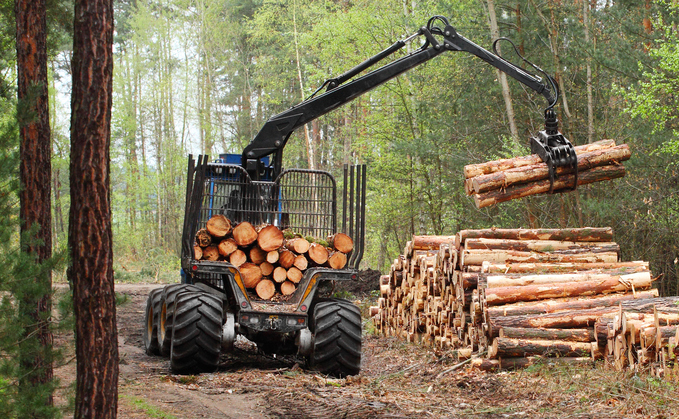
Private capital has an important role in addressing global challenges related to growing demand for resources, limited availability of land to meet these demands, and the urgent need to reduce greenhouse gas emissions. Realizing solutions requires directing investment capital into natural capital strategies like timberland and farmland. How can investors make the case for adding it portfolios? Here are four compelling reasons.
1) Population growth is increasing demand
By 2050, food, fibre and timber production will have to support more than 9.7 billion people, according to population estimates from the World Bank[1]. Incomes are expected to rise, which will add to demand on resources, with the greatest increases in emerging market countries such as India and China, where the middle class is expanding.
A report by the Global Harvest Initiative suggested that meeting this growing global demand by 2050 will mean agricultural producers need to double output from 2010 levels. Increases in productivity will help, but will not bridge the gap alone. What's more, the expected shortfall could be amplified by increasing frequency and severity of climate hazards in major producing regions.
Population increases and economic growth will also fuel demand for wood and forest products across a range of end-use markets like housing, furniture, tissue and construction.
Investors have an opportunity to meet this strong demand for farmland and timberland commodities with sustainably managed natural capital assets.
2) Supply constraints
Just as demand for resources is increasing, both timberland and farmland face supply constraints in some geographies.
UN data estimates global forest area is shrinking by 4.7 million hectares per year[2]. To combat deforestation and unsustainable management, natural forests are increasingly being protected for biodiversity conservation and climate mitigation. As a result, industrial forest plantations are a relatively small share of global forest areas.
Similarly, farmland is being lost to degraded soils, which can affect crop yields. One-third of soils are degraded and over 90% could become degraded by 2050 without changes to current practices, according to the UN.
These constraints highlight the need for high-quality natural capital assets with a focus on sustainable production and positioned for climate resiliency.
3) Demand for climate solutions
As an asset class, natural capital like timberland and farmland have the lowest average carbon intensity among both alternatives and traditional asset classes, as measured by the amount of net CO2 emissions per dollar invested. Allocations to low-carbon strategies, can balance emissions-intensive sectors within an investment portfolio.
Timberland represents a direct investment in carbon removal technology and offers the greatest near-term potential to generate real, measurable climate benefits. And trees not only remove CO2 from the atmosphere but can store it for a century or more in long-lived solidwood products.
Payments for ecosystem services, like carbon sequestration and storage, have the potential to enhance both financial performance and positive environmental impact from land-based investments.
These features are spurring institutional investor interest given the growing awareness of climate risk and adoption of mitigation and transition strategies in investment portfolios. In January 2023, over $11 trillion of assets under management, represented by the Net-Zero Asset Owner Alliance, have been committed to transitioning to net-zero greenhouse gas emissions by 2050 according the organisation's recent report.
4) Credible investment track record
Analysis of 30 years of returns for U.S. farmland and timberland by Nuveen Natural Capital demonstrated the benefits they can bring to a portfolio. When measured on a risk-return basis, farmland and timberland compared favourably to other asset classes, with strong risk-adjusted returns and also low or negative correlations to stocks and bonds, making them powerful diversifiers in a portfolio. Furthermore, they have historically provided an effective hedge against inflation.
Why natural capital?
Private finance is critical in the shift toward more sustainable land-use patterns that are instrumental to restoring nature's capacity to support the well-being and livelihoods of people all over the world. Investments in sustainably managed timberland and farmland offer pathways for investors to contribute positively to global sustainability solutions and improve climate resiliency. And they can do this while also contributing positively to portfolio risk and return targets.
Past performance is no guarantee of future results. Investing involves risk; loss of principle is possible.
All information has been obtained from sources believed to be reliable, but its accuracy is not guaranteed. There is no representation or warranty as to the current accuracy, reliability or completeness of, nor liability for, decisions based on such information and it should not be relied on as such.
Risks and other important considerations
This material is presented for informational purposes only and may change in response to changing economic and market conditions. This material is not intended to be a recommendation or investment advice, does not constitute a solicitation to buy or sell securities, and is not provided in a fiduciary capacity. The information provided does not take into account the specific objectives or circumstances of any particular investor, or suggest any specific course of action. Financial professionals should independently evaluate the risks associated with products or services and exercise independent judgment with respect to their clients. Certain products and services may not be available to all entities or persons. Past performance is not indicative of future results.
Economic and market forecasts are subject to uncertainty and may change based on varying market conditions, political and economic developments. As an asset class, real assets are less developed, more illiquid, and less transparent compared to traditional asset classes. Investments will be subject to risks generally associated with the ownership of real estate-related assets and foreign investing, including changes in economic conditions, currency values, environmental risks, the cost of and ability to obtain insurance, and risks related to leasing of properties.
Nuveen, LLC provides investment services through its investment specialists. This information does not constitute investment research, as defined under MiFID.
GAR-3216869CF-E1123W







